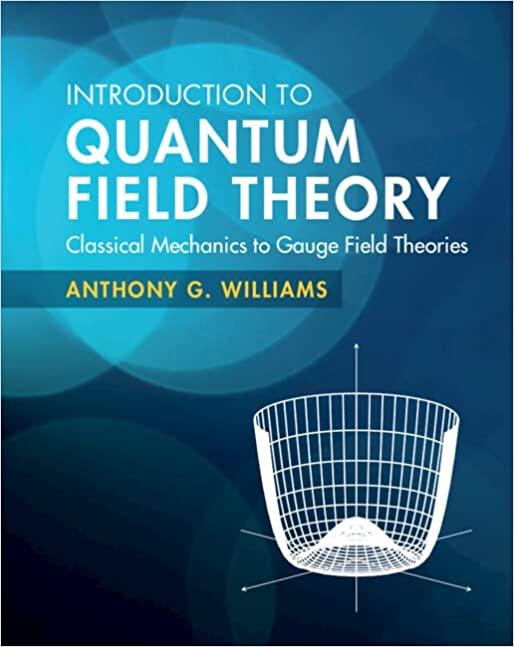For (S U(3)_{text {flavor }}) recall that we defined (left|i_{1} ightangle=|uangle,left|i_{2} ightangle=|dangle,left|i_{3} ightangle=|sangle) and (left|bar{i}_{1} ightangle=|bar{u}angle,left|bar{i}_{2} ightangle=)
Question:
For \(S U(3)_{\text {flavor }}\) recall that we defined \(\left|i_{1}\rightangle=|uangle,\left|i_{2}\rightangle=|dangle,\left|i_{3}\rightangle=|sangle\) and \(\left|\bar{i}_{1}\rightangle=|\bar{u}angle,\left|\bar{i}_{2}\rightangle=\) \(|\bar{d}angle,\left|\bar{i}_{3}\rightangle=|\bar{s}angle\). From Eq. (5.3.15) the raised basis states for the meson states in \(\mathbf{3} \otimes \overline{\mathbf{3}}\) are \(\left|i_{k}(\bar{i})_{\ell_{1} \ell_{2}}\rightangle \equiv \frac{1}{2} \epsilon^{\ell_{1} \ell_{2} \ell_{3}}\left|i_{k} \bar{i}_{\ell_{3}}\rightangle\), where the Young symmetrizers \(\hat{Y}\) act on the labels \(k, \ell_{1}, \ell_{2}\), e.g., (12) \(\left|i_{k}(\bar{i})_{\ell_{1} \ell_{2}}\rightangle=\left|i_{\ell_{1}}(\bar{i})_{k \ell_{2}}\rightangle\) and (123) \(\left|i_{k}(\bar{i})_{\ell_{1} \ell_{2}}\rightangle=\left|i_{\ell_{3}}(\bar{i})_{k \ell_{1}}\rightangle\) and so on. The singlet Young diagram is \(\exists\) and the octet Young diagram is \(\square\). The Young symmetrizers are given in Eq. (5.3.22).
(a) Show that applying the singlet Young symmetrizer \(\hat{Y}=(e)-(12)-(13)-(23)+\) \((123)+(132)\) to the raised basis states gives a vanishing result unless \(k, \ell_{1}, \ell_{2}\) are all different. When they are all different show that \(\hat{Y}\) projects out the one-dimenisional space with normalized basis vector \(\frac{1}{\sqrt{3}}|u \bar{u}+d \bar{d}+s \bar{s}angle=\left|\eta_{1}\rightangle\), which recovers the result in Eq. (5.3.16) for this case.
(b) Consider the octet Young symmetrizer \(\hat{Y}=(e)+(12)-(13)-(123)\). Show that applying this when \(k, \ell_{1}, \ell_{2}\) are all different leads to the states \(\frac{1}{2}|u \bar{u}-d \bar{d}angle, \frac{1}{2}|d \bar{d}-s \bar{s}angle\) and \(\frac{1}{2}|s \bar{s}-u \bar{u}angle\), from which we can construct two orthonormal states chosen to be \(\frac{1}{\sqrt{2}}|u \bar{u}-d \bar{d}angle=\left|\pi^{0}\rightangle\) and \(\frac{1}{\sqrt{6}}|u \bar{u}+d \bar{d}-2 s \bar{s}angle=\left|\eta_{8}\rightangle\). Since \(\left|i_{k}(\bar{i})_{\ell_{1} \ell_{2}}\rightangle\) is antisymmetric in \(\ell_{1}\) and \(\ell_{2}\) then \(\ell_{1} eq \ell_{2}\) and there are only six remaining independent possibilities \(k=\ell_{1} eq \ell_{2}\), i.e., \(k \ell_{1} \ell_{2}=112,113,221,223,331,332\). Show that applying the symmetrizer \(\hat{Y}\) to these leads to the orthonormal states \(|u \bar{s}angle=\left|K^{+}\rightangle,|u \bar{d}angle=\left|\pi^{+}\rightangle,|d \bar{s}angle=\left|K^{0}\rightangle,|d \bar{u}angle=\left|\pi^{-}\rightangle,|s \bar{d}angle=\) \(\left|\bar{K}^{0}\rightangle,|s \bar{u}angle=\left|K^{-}\rightangle\), respectively, where we assume \(J^{P}=0^{-}\)here and so arrive at the pseudoscalar meson octet. Assuming \(J^{P}=1^{-}\)gives the vector octet.
(c) Show that the second Young symmetrizer, \(\hat{Y}=(e)+(13)-(12)-(132)\), in Eq. (5.3.22) leads to the same states and hence to the same irrep/multiplet. This is due to the antisymmetry in \(\ell_{1}\) and \(\ell_{2}\) for the mesons. The baryon octets 8 and \(\mathbf{8}^{\prime}\) in the ClebschGordan series for \(\mathbf{3} \otimes \mathbf{3} \otimes \mathbf{3}\) are different. However, for baryons we need to use the \(S U(6)_{\text {spin-flavor }}\) formalism because of the need to satisfy Eq. (5.3.39).
Step by Step Answer:

Introduction To Quantum Field Theory Classical Mechanics To Gauge Field Theories
ISBN: 9781108470902
1st Edition
Authors: Anthony G. Williams





